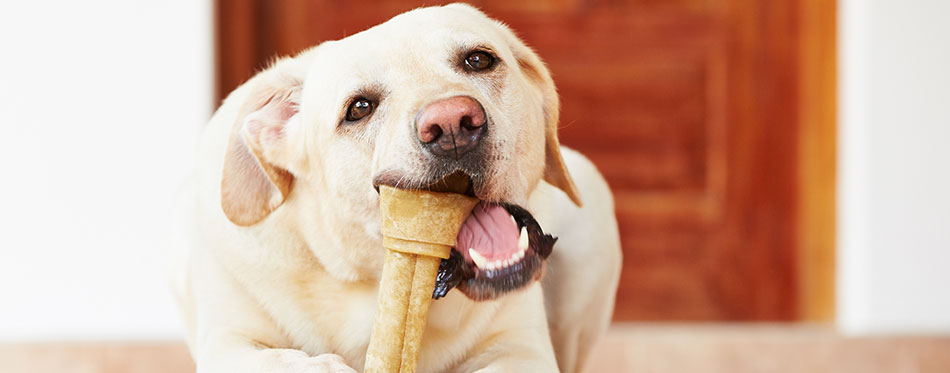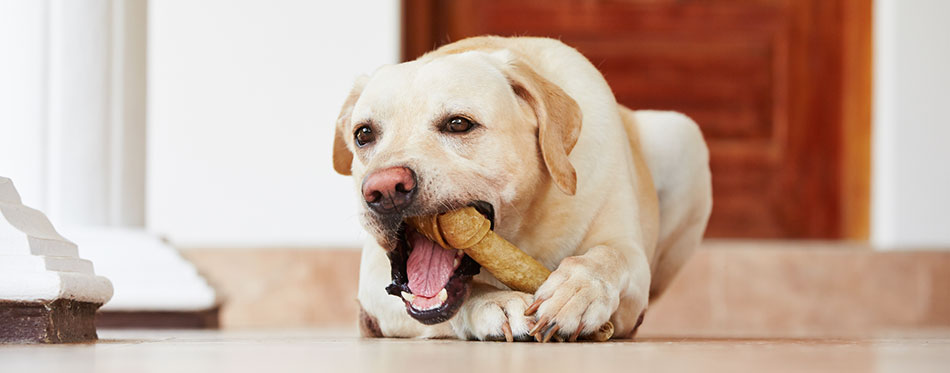It is true that dogs are omnivores. But this doesn’t necessarily mean that we should already feed them mostly with plant-based food. As such, a great portion of their diets should still be animal food sources. And when it comes to animal-based dog foods, raw bones are the best for man’s best friend. They’re not only nutritious; they’re also a great natural toothbrush, a mental stimulant, and an all-around meal replacer. And while there are some concerns about its safety, you can easily address these issues if you know how to properly feed your dog bones.
Always Give Raw Bones, Not Cooked Ones
The best bones for dogs are the raw ones, those that still come with some of the flesh or meat as well as tendons, cartilage, fat, skin, and perhaps even bone marrow. Whenever feeding bones to dogs, it is best never to cook the bones. Instead, they should be given raw.
Cooked bones are never safe for dogs. Sure, they may have the flavors of your seasonings (which by themselves are a big no-no when it comes to canine feeding), but cooked bones are very tough or hard to chew. This is why many folks who give their dogs cooked bones eventually complain of broken teeth in their dogs. While it is also true that giving compact or dense raw bones like those from the thigh can also crack your pet’s tooth, there’s a much greater risk when the bone is cooked.
Moreover, cooked bones have the tendency to break because they are more brittle as a result of the cooking process, removing many of the substances that are compacted into the bone. These splinters can injure your dog’s esophagus, stomach, or even gut. Perhaps more important is the fact that cooking bones will remove the nutrients that are present in the bone. So all your dog will get is a big piece of hard yet brittle material to chew on.

Choose the Right Bone for Your Dog’s Characteristics
In addition to giving only raw bones to your dog, it is also imperative that you know what bones you can give to your dog depending on its characteristics.
For beginners, you can give duck wings and chicken wings usually from the age of 10 weeks and upwards. Wing bones are less dense than other types of bones and they are usually smaller in size, too. You can give the whole wing including the skin and the flesh underneath. These are also rich in cartilage which can supply chondroitin to your pet.
A notch higher than wings are neck bones from poultry. You can give your 10-week old hound the entire neck bone from ducks or even turkeys. These are larger than neck bones yet softer than other types of bones like the ribs and thighs. When compared to wing bones, neck bones have more cartilage found in between the bones. Remember that the neck is a part of the animal’s backbone or vertebra. As such, these are typically composed of smaller bones that are stacked on top of each other.
If your dog has been feeding on bones for a while, you can start giving it the neck bone from lamb. Make sure to give this to a puppy that is at least 6 months old. Whole lamb neck bones provide an excellent source of calcium and phosphorus while also doubling the amount of chondroitin it gives to your pet.
From 10 months onwards, you can start giving your dog denser, more compact bones. However, it is best to choose wisely the type of bone you are going to give. You can always start with lamb ribs as these are a bit ‘softer’ than beef ribs. If you have a really tough chewer in your hands, then you can give beef knuckle bones or even marrowbones. The latter are filled with bone marrow. You may want to remove the marrow if you’re concerned about its calorie content. Half an ounce of this fatty dog delicacy delivers about 126 to 130 calories.
You may also like our articles on Wet Dog Food and Dry Dog Food.
Always Supervise Your Dog Whenever You Give It Bones
You can never be too sure about the safety of feeding bones to your dog, even though you give the right type of raw bones. The point is that just like anything else that your dog can chew on, bones can break and these can be swallowed by your pet.
It should be relatively fine if what your dog swallows are softer bones or even cartilage as these can be easily broken down once they reach the stomach. Unfortunately, some dogs aren’t patient enough when chomping on a bony delicacy. They may swallow whatever is left of the bone and this can get lodged in their gut.
It is for this very reason that you should never leave your dog to its bone. This is especially the case for large bones that are quite brittle. Always supervise your dog whenever you give it bones to entertain itself.
For a wider selection of choices, check out our Dog Chews and Rawhide For Dogs guides.

Be Picky When Sourcing Bones for Your Dog
Unless you have your own farm where you butcher the animals that you’ll be sourcing the bones from, it is important to be picky where you source it. If you trust your local butcher especially when it comes to the sanitary and hygienic handling of butchered animals, then you can perhaps get your raw bones from him. It goes without saying that you should never get raw meaty bones from someone who may have a dubious reputation.
There are also small companies now that provide raw bones for dogs. However, it is important to look into the background of these companies so that you can feel a lot safer about the quality and safety of the bones you’re giving to your pet.
The best way you can ensure that your dog gets the highest possible quality of bones is to grow the animals that you’ll be sourcing bones from yourself. Sadly, if you live in the city, this is often not possible.
Feeding your dog bones the proper way means giving it only raw bones of the correct type that is appropriate for your dog’s characteristics. Supervising your dog while feeding and sourcing the bones only from reputable individuals are also essential.

